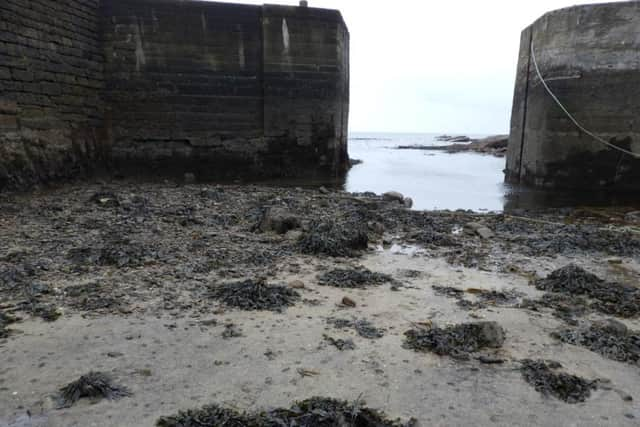Two-year pilot plan to tackle seaweed problem at popular Fife harbour
and live on Freeview channel 276
A two-year pilot project to tackle the escalating costs of removing seaweed from a busy Fife harbour has been unveiled. Fife Council wants to install a temporary seaweed net across the mouth of the harbour at Cellardyke in a bid to resolve a long-standing problem.
Seaweed is dislodged from offshore by storm or trawling activity, and washed ashore where it builds up at the harbour. The narrow entrance at Cellardyke means it becomes trapped, and does not disperse as it does at other locations - and the clear-up costs have rocketed from £2000 between 2011-18 to over £18,000
Advertisement
Hide AdAdvertisement
Hide AdNow, the local authority has submitted a formal planning application to itself to install the net for two years to cover two winter trials.


The narrow entrance at Cellardyke means it becomes trapped, and does not disperse as it does at other locations.
A report to councillors said: “ This is a relatively significant proportion of the annual Harbours Revenue Budget to spend on a single harbour, and it is no longer financially viable for Fife Council to continue this management practice.”
A number of options were put forward including removing the seaweed and disposing of it along the coastline or taking it to landfill. A ‘do nothing’ approach was also dismissed as it would see seaweed accumulate in the harbour and, over a period of time, likely leave a permanent cover of decomposing matter across a significant area of the harbour bed.
Advertisement
Hide AdAdvertisement
Hide AdThe installation of a floating boom - similar to an oil spill containment boom - across the harbour entrance to prevent or at least limit the seaweed ingress was briefly considered. Seaweed tends to move as a mass along the seabed and lower part of the water column, and does not generally float on the surface as a raft. It was felt that the majority of the seaweed would likely pass under a floating boom.
Councillors will consider the application for a net in due course.